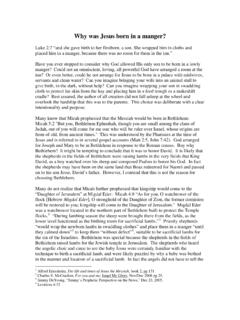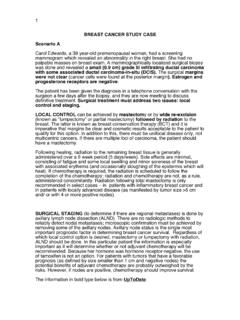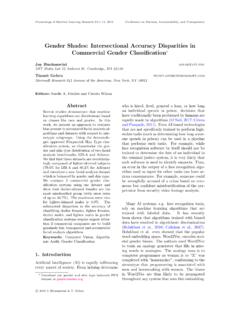Transcription of ACLS Study Guide - medtigo
1 | 413-398-5733 | GuideAs a medical graduate, medical student, or practicing physician, getting acls -certified is essential. acls {advanced cardiac life support} encompasses a set of algorithms that help healthcare professionals handle medical emergencies. These include cardiovascular emergencies, myocardial infarction, stroke, and cardiac arrests. acls training includes guidelines for recognizing and managing these emergencies. It also includes training in handling team communication tactics and team dynamics. Other than physicians and medical students, acls training is essential for nurses, paramedics, firefighters, and emergency medical technicians. Below are guidelines that will boost your understanding of current acls guidelines have been in use since October 2015.
2 The AHA {American Heart Association} is meant to meet in 2020 to review these guidelines to reflect Study findings and other changes. Here is a review of the changes to various elements of prior acls Study Guide2020 acls Guideline Changes acls Study | 413-398-5733 | CPR and BLS quality One of the essentials of optimizing patient outcomes in cardiac arrest remains quality CPR. To guarantee these, the following are the changes that the AHA instituted to CPR and BLS quality: Compression depth: the endorsed depth of chest compressions remains between 5cm {two inches} and 6cm { inches}. Other than the measurements, the quality changes in CPR and BLS state that you should avoid excessive chest compressions. Very deep and too many chest compressions have been shown to have adverse patient outcomes.
3 Full chest recoil: AHA also emphasizes that rescuers should avoid leaning on a patient's chest during compressions. This ensures that you achieve full chest wall recoil. The recoil guarantees the presence of negative wall pressure that returns blood flow and reinstates myocardial circulation. Minimizing interruptions: the target for the time percentage when performing chest compressions by the AHA is not less than 60% for CPR. This is called the chest compression fraction time. Healthcare provider {HCP} BLS: HCPs are required to call for help when they find an unresponsive victim. However, it is practical to continue assessing the victim's pulse and breathing simultaneously during this time. Advanced airway ventilations: healthcare providers should provide one breath every six seconds at the same time as chest compressions.
4 acls Study | 413-398-5733 | Cardiac arrest medications At times, you might be required to use cardiac medications to manage a patient in acls . This is why you should have a background in pharmacology to know the medications to use in an emergency. One of the notable changes to medications in acls is the use solely of epinephrine, rather than vasopressin plus epinephrine, to manage a cardiovascular emergency. This is because there is no evident benefit of administering vasopressin in combination with epinephrine rather than simply using epinephrine alone. 3. Post-cardiac arrest management There are changes as regards hemodynamic goals, therapeutic hypothermia, and the use of postarrest medication in acls . For instance, patients should have a set temperature for some time after a cardiac arrest to prevent adverse outcomes.
5 4. End-tidal CO2 The end-tidal CO2 is a measure of someone's exhaled carbon dioxide. It is among the indicators of a patient's return to spontaneous circulation. The end-tidal CO2 target during a cardiac arrest case is above 10mmHg. If you notice the reading is below this, then you should continue the chest compressions. The end-tidal CO2 reading is also essential when confirming the placement of an endotracheal tube. A reading of less than 10mmHg might indicate that the tube has been popped out. acls Study | 413-398-5733 | should first pass an exam for you to be certified and re-certified in acls . This is, however, not so easy, even for healthcare workers who have years of experience. Here are some effective guidelines on how you can Study to ace the acls exam: Do an algorithm a night You should be well-versed in the acls algorithms for you to ace your exam.
6 These algorithms are simple flowcharts on how to handle different elements in a cardiovascular emergency. To have the algorithm at your fingertips, start studying early and memorize one per night. Review case scenarios You will encounter different case scenarios in your career. You should identify the symptoms and signs you deal with and understand the procedures you will employ to manage them. When studying for your acls exam, go through as many case scenarios as you can to be adequately prepared for the advanced airway techniques and indications Although learning to insert an advanced airway lies beyond the scope of acls , it s still important to review such techniques and the indications of when it may be necessary. This is because advanced airways can provide better oxygenation.
7 Several advanced airway components exist including esophageal tracheal tubes (ET Tube), laryngeal masks, and laryngeal tubes. Only someone trained in advanced airway techniques should perform the intubation, administering one ventilation every six seconds. Know dosage amounts You will be needed to identify the medications to use in different acls case scenarios. Other than knowing the right medications, you should have their right dosages. The incorrect drug or dosage can lead to an adverse outcome in your patient (for example, know the difference between endotracheal and intravenous dosing of epinephrine). You can consider using mnemonic flashcards to remember the medications and dosages easily. Voltages for Defibrillation and Cardioversion Two other important components of the acls test is knowing the proper voltages for defibrillation and cardioversion.
8 These voltages are measured in Joules and need to be precise based on a patient s condition and age. Review basic electrocardiography Electrocardiography is used to assess a patient's heartbeat. The health service provider places electrodes on a patient's chest, and the electrocardiogram records the heart's activity on a graph. You should know how to take and interpret an electrocardiography test for you to pass your acls cue cards Creating cue cards is another great way to Study for the acls exam and help you memorize all of the important key components, methods, and algorithms that will appear on the acls certification test. Additionally, there are a host of useful web resources to take advantage of, like this online ECG to studyACLS Study | 413-398-5733 | a part of your training, the following are some of the algorithms that you will Six Algorithms of acls Algorithm forsuspected stroke: Figure 1: acls ACUTECORONARYSYNDROMEALGORITHM Algorithm for suspected stroke An acute stroke will be categorized as an ischemic or a hemorrhagic stroke.
9 Ruptured blood vessels will cause a hemorrhagic stroke, while blockage of blood flow to the brain results in an ischemic stroke. The acls stroke algorithm focuses on a rescuer's rapid evaluation, identification, and intervention. It entails these steps: Recognizing the signs of a stroke. Once you identify a possible stroke, activate the EMS {emergency medical service}. Transporting the patient to a hospital with an equipped stroke center if possible. Upon hospital arrival, monitor the patient's vital signs, maintaining oxygen saturation at above 94%, and establish IV access. You should also gauge the patient's neurological status, get a brain CT scan, and consult a neurologist. Use an instrument like the NIH stroke scale to complete a neurological exam with the stroke team or MlChest pain that rediates to the arms, jaw,shoulder; nausea; vomiting; SOBA spirin, ECG, NTG every5 minutesmorphine if neededCompletefibrinolyticchecklistBegin reperfusion protocol(PCI preferred) or fibrinolyticAdmit to monitored bedAdjunctive therapiesSTEMI onset ofsymptoms <12hours?
10 YESNOGive oxygen if pulse oximetry is <94%ED door to needle timefor fibrinolytics <30 minutes;Time to PCI <90 minutesHeparin, beta blockersACE inhibitorsACLS Study | 413-398-5733 | Algorithm: Figure 2:ACLSBRADYCARDIAALGORITHM Acute coronary syndrome {ACS} algorithm This encompasses several cardiac issues, including STEMI {ST-segment elevation myocardial infarction} and unstable angina. The ACS algorithm aims to relieve chest pain, identify the type of cardiac event, and prevent major adverse effects. Tachycardia is a heartbeat that is above 100 bpm in adults. Bradycardia is a heartbeat of less than 60 bpm in adults (although symptoms usually develop when heart rate drops below 50 bpm). The algorithm for bradycardia and tachycardia includes: The identification and treatment of the cause of tachycardia or bradycardia.





